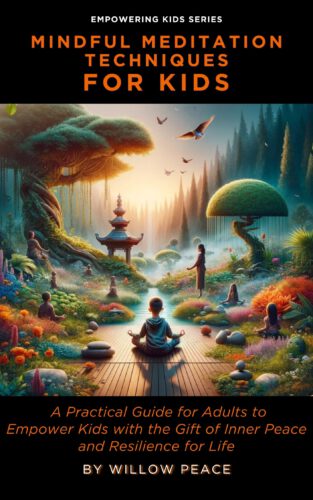Guest writer for Wake Up World
The feeling in your chest just won’t go away, and it’s starting to slowly eat you up each day.
Longing, desire, repulsion, bitterness, heartbreak, sadness, volcanic rage — so many emotions mixed together. So much pain. So much pure and unexpressed suffering.
When will these feelings dissolve? When will you finally feel calm, grounded, and happy again? It all seems like too much for one person to carry. You just want to enjoy life again without the tormenting weight of anguish and bitterness in your chest. You just want to feel whole again.
If you’re currently facing betrayal, abandonment or unfathomable loss, I want you to know that you’re not alone. I know what it’s like to carry so much pain inside of you that you go physically and mentally numb. I know how it feels to carry a shattered heart and a deep void of emptiness within. I know what its like to be on the bleeding edge of despair and utter desolation. And I have seen this struggle countless time in other people too.
But although everything around you may have lost its color, although you’re struggling to make meaning out of what has happened to you, there is hope. Like the moon and stars in the night sky, there are still beacons of light to be found in your darkness. One of these beacons is the practice of letting go.
What is Letting Go?
Letting go means being willing to release the past and future, and live in the present moment. Letting go doesn’t mean forcing yourself to get over it or making yourself forget what happened. Instead, letting go is a process of surrendering painful beliefs and emotions, and welcoming in love, understanding, forgiveness, and self-compassion.
There is no easy quick-fix or five-step-solution for letting go of feelings such as anger, fear, and grief because letting go is a process. It can take a while. But the good news is that letting go is a process that helps us to grow, mature, and find more happiness and inner freedom than we thought ever possible. Sometimes your heart needs to break a little for the light to get in.
Related reading: The Power of Forgiveness: The Transformational Effect of Letting Go of Resentment
What is the Opposite of Letting Go?
The opposite of letting go is attachment. When we attach or identify with our thoughts, we suffer. On the other hand, when we stop attaching to our thoughts and simply see them for what they are: energy that we assign meaning to, we experience freedom.
Common thoughts that we attach to which create emotions such as anger, rage, disgust, disappointment, anxiety, fear, grief, and depression, include:
- She should have been a good mother.
- If he hadn’t cheated, I would have been happy.
- Things should have gone differently.
- I should have a much nicer life by now.
- He/she shouldn’t have died.
- My boss should have promoted me.
- If I stay a little longer, he will stop his drinking.
- If I did that differently, I would be much happier by now.
- She has to change or I won’t find peace.
- They are controlling my life.
- Everything was much better in the past.
- I will be happy in the future when I get what I want.
As self-inquiry teacher, Byron Katie writes, “When I argue with reality I lose, 100% of the time.” But what does this mean?
When we attach to our beliefs about how life should go, we suffer each and every time because we are resisting what is right here and right now. When we resist reality, we also tend to adopt the role of the victim, which causes even greater suffering.
The truth is that how can we 100% know that something is completely good or bad for us? While something like a divorce or death may immediately seem like a terrible thing, how do we know that it is completely bad? Can we see every possible future outcome and consequence of such an occurrence in the present moment? Of course we can’t. Is it possible that such an experience could actually give birth to good things as well? Yet we continue to believe and insist that it shouldn’t have happened when the reality is that it is what it is. With or without our thoughts it has still happened.
Of course, experiencing a loss or trauma doesn’t mean we should ignore how we feel. It is perfectly normal and important to allow ourselves to feel the anger, confusion, grief, fear, hatred, and bitterness within us. But once we start attaching ourselves to these emotions, we experience suffering.
It is our attachment and identification with our thoughts that is the sole cause of our suffering.
42 Powerful Ways of Letting Go
As I mentioned previously, letting go is a process that takes time and effort. There is no quick and immediate way to let go of all your painful feelings. However, one of the fastest ways I have personally found of letting go is questioning and disbelieving thoughts. This method is known as self-inquiry and helps to get to the root of your suffering. Read more about self-inquiry.
However, there are dozens of other practices which can help you start the process of letting go. The techniques I have shared below can help to both indirectly and directly assist you in letting go. If one of these practices inspires you to try something new, share it with me in the comments!
Letting Go of Anger and Rage
1. Allow yourself to scream
Find a private place to unleash your emotions. If you’re too embarrassed to scream out loud, get your pillow and bury your head into it. If you have a pool, jump in and scream at the top of your lungs.
2. Watch something that makes you cry
Sadness is the emotion that often forms a sandwich around anger. In other words, anger is often a form of sadness and vice versa. To access this anger, watch a movie that makes you cry.
3. Write an enraged letter
Let out your rage through writing. Detail every little thing you’re angry about and don’t hold back your feelings. Curse, condemn and threaten the person or situation as much as you like until you’ve exhausted your feelings. Once you’re finished, rip up or bury your letter.
4. Fire ritual
On a small piece of paper, write down the name of a person who has provoked great anger inside of you. Light a candle and drop the piece of paper into the flame, watching as it burns and curls up into ash.
5. Be assertive and take no sh*t
Anger is often the result of not speaking up for ourselves and feeling oppressed by another person. To avoid repressing this emotion, learn how to negotiate and be assertive. Being assertive doesn’t mean being aggressive, instead, it is a healthy style of communication that honors your needs, as well as another’s needs.
6. Do some kicking, punching or intense exercise
Rage and anger are fiery forms of energy that can be healthily expressed through exercise. Try some form of intense workout and make your objective to feel your anger to the fullest.
7. Take responsibility for your happiness
Often, anger tends to be accompanied by blame and criticism directed towards another person. Remember that no one can take away your happiness. As hard as it is to accept, the problem isn’t the other person, it is how you react to that person. Realize that anger is a normal reaction, but it doesn’t need to define you.
8. Notice how much energy anger burns up
It takes so much of our effort and energy to hold onto grudges and bitterness. Notice how forgiveness and letting go of resentment actually increases your energy and fills you with peace.
9. Understand that anger harms you more than anyone
Staying angry at someone hurts you the most. In some cases, anger actually empowers the other person because you’re showing them how much energy and effort you’re putting into hating them. (This is why internet trolls thrive so much.)
10. What people say and do says more about them than you
Whenever another person is unkind or cruel, their behavior is secretly a reflection of how they treat themselves. This sad truth can help you feel better and also practice disarming and letting go of intense emotions.
Letting Go of Anxiety and Stress
11. Find the belief behind your fear
All forms of anxiety and stress are linked to the thoughts in our heads. What underlying belief is causing you such great fear? Remember that the thoughts are just thoughts: they don’t mean anything about you or your life until you give them meaning. So what core belief is triggering your anxiety?
12. Breathe deeply
Mindful breathing is such a simple technique yet one of the most powerful out there. When you focus on your in-breath and out-breath you are essentially drawing yourself back into the present moment. Anxiety and stress develop when our minds get lost in past or future thoughts. So breathing is a simple way of grounding you in the here and now. Deep breathing also stimulates the vagus nerve which sends signals to your brain to calm you down.
13. Use natural soothing herbs
Herbs such as damiana and holy basil are effective herbal remedies for anxiety that help to calm down your nervous system. Once your body is relaxed, you can then begin the process of letting go of anxiety-provoking thoughts. If you are struggling with extreme muscle tension and feel physically crippled by anxiety, you might even like to consider medication for a short period of time. I have nothing against medication: so long as it is a temporary method that is accompanied by proactive natural relaxation techniques.
14. Realize that you cannot control your thoughts
The reality is that we cannot control our thoughts, otherwise, don’t you think we would always choose to think positive and happy thoughts? Thoughts are spontaneous and uncontrollable. Yes, we can force ourselves to think happy thoughts, but this is not a true solution: it is simply a practice of superimposing thoughts on top of other thoughts. Although realizing that you can’t control your thoughts may be a little depressing, ultimately, it is liberating. You no longer have to shame yourself for thinking a certain way or fear that you are not good enough because you can’t think positively. Understanding that you cannot control your thoughts, but you CAN become aware of them, helps you to dis-identify with them, and therefore, stop suffering.
15. Stop fighting how you feel
Resistance to your fear creates even more tension and fear. Instead, allow yourself to feel whatever you’re feeling. Stay grounded through your breath and gently explore whatever is arising inside of you.
16. Stay grounded in the present moment
Practice mindful awareness to take you out of your head and into the present. Notice the colors, sounds, smells, textures, tastes, and different feelings in your body. Anchor yourself to the Now by noticing what is happening.
17. See anxiety as a teacher, not an enemy
When we demonize anxiety, we tend to increase our anxiety; this is because we are resisting what we are experiencing and labeling it as bad. Try to change your perspective. Understand that everything in life can be a teacher if we let it. Anxiety may just be your greatest teacher in life, helping you to develop self-awareness, mindfulness, compassion, and ultimately the ability to surrender to that which is beyond your control.
18. It’s OK to feel scared
It’s completely normal to feel afraid and anxious. So many people out there share your struggles. Being vulnerable to life isn’t a failure, in fact, admitting that you’re scared is actually a form of strength. It’s also normal to feel anxious about your anxiety!
19. Spend time alone to recuperate each day
Relaxing in solitude is so important for our mental health. Our thoughts tend to go a bit wild when we have no time to sit down and breathe. Make sure you spend time alone.
20. Find a relaxation technique
There are so many amazing relaxation techniques out there. Whether it be EFT (emotional freedom technique), PMR (progressive muscle relaxation), meditation, yoga, or something else, ensure you do it daily.
Letting Go of Toxic People and Relationships
21. Journal about your feelings
Pour out your feelings and regrets in a private journal. Let writing and expressing your innermost thoughts be a balm for your soul.
22. Realize that you did the best you could
When a relationship ends we tend to obsessively dwell on the past and all that we did wrong. Be kind to yourself and realize that you did the very best you could with the knowledge and maturity you had at the time. There’s no need to beat yourself up.
23. Don’t force forgiveness
If you don’t feel like forgiving someone, don’t force yourself. There’s no need to be disingenuous or quasi-spiritual about what you’re experiencing. Allow yourself to feel royally pissed! Give yourself space to rage and vent. You will forgive when you feel ready to forgive, and not a moment before. So let go of the guilt and honor how you feel right now.
24. Create clear boundaries
If you are not comfortable with something or someone, respect yourself by creating boundaries. Don’t let anyone abuse you or ignore your limits. Be firm but kind. Preserve your energy and only use it on those you feel comfortable having around.
25. Release regrets and live in the moment
When relationships end we are often filled with intense regrets. While this is normal to experience, realize that the past is the past: it is gone completely. Pining over what could have been or what you could have done differently only creates more suffering. Acknowledge these regretful thoughts, but try to consciously release them. If you must, create a mantra that will help you live in the present such as I live here, now.
26. What gift is this experience trying to impart?
Every experience in life holds a secret and sacred gift, even the most heartbreaking circumstances. Explore what this person has taught you willingly or unwillingly. What gift do you now possess that you didn’t before?
27. Explore the core issue
Often times we find letting go impossible because we are still confused about what happened. In order to help you find peace, think about why your relationship crumbled. Try to avoid blaming yourself or the other person: stick to the facts as much as you can. For instance, you might discover that your relationship burned out quickly because neither of you learned to develop self-love, or perhaps the central issue was being too busy or distracted.
28. Let go of the need to be right
The monkey mind (the ego) hates being wrong and is addicted to feeling right. One way we stay locked in the past is by trying to desperately prove that we are the victim, and the other is the perpetrator. In order to get past this, realize that what was done was done. There is nothing that can be done about it now. The healthiest thing for you is to move on and practice letting go.
29. Notice the minds tendency to romanticize
It is much easier to let go of a human being than your one true love or prince/princess. In order to let go, remember the good as well as the bad. Our minds have a habit of seeing the past through rose-tinted glasses, conveniently blocking out whatever caused us suffering. Notice this mental trick and realize that happiness cannot ever be found in the past, only the present moment.
30. Understand that you cannot change anyone
No matter how hard you try, how much you dream or plan, you cannot change anyone. You cannot make anyone nicer or healthier or a better person. Sometimes, we continue to cling to hope because were convinced that we can change our partners, friends or family members. But believing that you can change someone is false hope. Another person can only change if they first decide to change. And this decision has to authentically and sincerely come from them. Realizing this can help you practice letting go.
Letting Go of Frustration and Impatience
31. Explore what you’re trying to control
Frustration is often the result of trying to control something that is beyond your power. What are you trying to control outside of yourself?
32. What expectations aren’t being met?
Expectations create immense amounts of frustration and impatience. What are your expectations, how realistic are they, and how are they causing you to suffer?
33. Simplify your life
Holding onto expectations and beliefs about how life should be are often compounded by a busy and frantic life. What can you do to release the craziness of your life? For instance, you might like to reduce your number of work or social commitments, stop using social media so much or even adopt a minimalist lifestyle.
34. Let go of letting go
Are you frustrated that you just can’t seem to let go? Ironically, this is a great source of inner tension. Like any concept or idea in life, please hold this notion gently with compassion for yourself. Surrender takes time. Sometimes, letting go of letting go actually helps you to, well, let go! Give yourself space and permit mistakes. It’s all OK, really.
Letting Go of Depression and Grief
35. Identify mental distortions
What types of thoughts are dominating your brain? In my article about how to overcome anxiety and depression I explore twelve of the most common distortions, e.g. mind reading, fortune telling, self-dismissal, catastrophizing, and many others. Please check the article out here.
36. Be self-compassionate
In whatever small way you can, be kind to yourself, even if that just means putting on an extra jumper because you’re cold. Give yourself the permission and space to live life at your own pace. Do one kind thing for yourself each day.
37. Get some fresh air and sunshine
Sometimes simply going outside and feeling the wind and the sun against your skin is enough to pull you out of your head. Try going for a short walk. If you have a pet, take them along with you and notice how happy they are to be with you walking. Pets have such a wonderful way of grounding us and reminding us of the little pleasures of life.
38. Allow yourself to feel whatever you’ve locked away
Depression is often the result of shutting away and numbing too many emotions for too long. Little by little, try to release the emotions buried within you. Express how you feel through artwork, journaling, sports, dance, or whatever moves you. Remember to stay connected to your breath as you allow the emotions to bubble up and release.
39. Accept the inevitability of change
Is resistance to change causing you grief? Sometimes we develop depression because we are so resistant to the transience of life. We desperately want everything to stay the same because it provides us with a sense of comfort and safety. But when things change, we become terrified and numb ourselves to avoid our fear. Please know that it’s okay to feel scared. We all feel that way. Accepting that change is inevitable can also be very liberating: how dead and boring would life be if everything always remained the same forever? Change is what makes life so alive and vibrant. Sometimes a simple shift in perception is all we need.
40. Name your thoughts
Thoughts are just thoughts: they mean nothing about you until you believe they do. As mentioned previously in this article, we don’t choose our thoughts: they simply arise in our heads. The problems only begin when we believe these thoughts instead of letting go of them (this, by the way, is the purpose of meditation). Each day, try to name your thoughts that create suffering. You can name your thoughts on paper or mentally. Different examples of thought types include worry thoughts, fearful thoughts, future thoughts, past thoughts, expectation thoughts, angry thoughts, resentful thoughts etc.
41. Broaden your mind
Read up on depression and grief. Gather alternative insights different from your own. Give your brain the space to learn and develop new perspectives. (Learn more here.)
42. Reconnect with your soul
To me, depression is a sign of soul loss. What we are really longing for is the infinite love, peace, understanding, and compassion that lies at our very core. We believe that what we need lies within a new romantic relationship, better house, more money, or an upgraded personality but the truth is that we are all searching for the home hidden within ourselves. The problem is, most of us have forgotten that there is more to life than what society teaches. It is hard for us to believe that there is more than what we see because we have been conditioned to see life through a narrow mental lens. Soul work is the practice of listening to your soul again and finding the peace that lies at the heart of your essence. Some simple soul work practices you can explore include practicing soul communication, self-discovery, and self-love (read more about how to start soul work).
Have I missed out anything from this list? What other ways of letting go can you recommend? Please share in the comments, or join the conversation on Facebook.
Recommended articles by Aletheia Luna:
- 9 Types of Muscle Tension Caused by Trapped Emotions
- Being Spiritual Doesn’t Mean Sh*t If You Can’t Hold Space for Others
- 9 Ways to Awaken the Divine Masculine Within You
- 12 Signs It’s Time to Move On and Burn All Bridges
- How to Re-Parent Your Wounded Inner Child
- How to Perform Self-Hypnosis for Health and Happiness
- How to Channel Your Soul Through Automatic Writing
- 42 Powerful Ways of Letting Go of Anger and Heartbreak
- 6 Types of Energy Vampires That Emotionally Exhaust You
About the author:
Aletheia Luna is an influential spiritual writer whose work has changed the lives of thousands of people worldwide. After escaping the religious sect she was raised in, Luna experienced a profound existential crisis that led to her spiritual awakening. As a psychospiritual counselor, tarot reader, and professional writer, Luna’s mission is to help others become conscious of their entrapment and find joy, empowerment, and liberation in any circumstance. See more of her work at lonerwolf.com.
This article 42 Powerful Ways of Letting Go of Anger and Heartbreak was originally published on lonerwolf.com, reproduced with permission.

If you've ever found value in our articles, we'd greatly appreciate your support by purchasing Mindful Meditation Techniques for Kids - A Practical Guide for Adults to Empower Kids with the Gift of Inner Peace and Resilience for Life.
In the spirit of mindfulness, we encourage you to choose the paperback version. Delve into its pages away from screen glare and notifications, allowing yourself to fully immerse in the transformative practices within. The physical book enriches the learning process and serves as a tangible commitment to mindfulness, easily shared among family and friends.
Over the past few years, Wake Up World has faced significant online censorship, impacting our financial ability to stay online. Instead of soliciting donations, we're exploring win-win solutions with our readers to remain financially viable. Moving into book publishing, we hope to secure ongoing funds to continue our mission. With over 8,500 articles published in the past 13 years, we are committed to keeping our content free and accessible to everyone, without resorting to a paywall.










